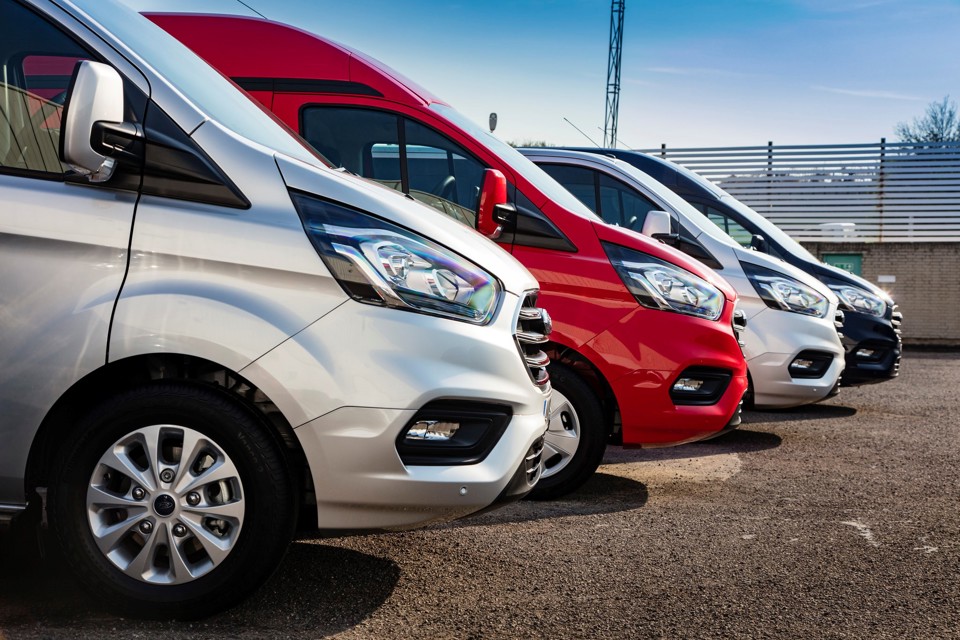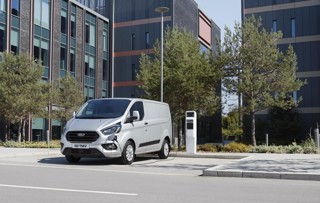Online shopping and the trend for self-employment are among factors that are driving huge growth in the use of vans, according to a new report from Ford.
So significant is the contribution, €675 billion (£582bn) in 2017 alone, that it exceeds the GDP of nations that include Argentina, Saudi Arabia, and Switzerland – and has shown a 19% increase, from €569 billion, compared with 2012.
The number of vans on the road in France, Germany, Italy, Netherlands, Spain, Turkey and the UK increased by more than 10% between 2013 and 2018, from 23,250,000 to 25,690,000, with most growth shown by Turkey (31%), Germany (24%) and the UK (20%).
These are among the findings of Economics of Commercial Van Usage Across Europe, a new report compiled by the Centre for Economics and Business Research (CEBR) for Ford.
The manufacturer commissioned the report after recently announcing the new all‑electric Ford Transit van, part of an extended electrified vehicle range that will enable drivers to more easily comply with increasingly stringent emissions legislation.
Hans Schep, general manager of commercial vehicles for Ford of Europe, said: “Vans offer crucial support to a world where how we live, work and get about is quickly changing. This report shows that through their contribution to the wider economy, light commercial vehicles truly are the backbone of business in Europe.”
The CEBR calculated the value of businesses made possible by vans, such as postal and courier services, as well as the fuel duty contribution of van operators to governments.
The report, which focussed on seven leading European economies, identified that between 2012 and 2017, the UK showed the biggest percentage increase in contribution to the economy, from €110 billion to €145 billion (32%), followed by Germany, from €139.4 billion to €182.9 billion, (31%).
Altogether vans in the seven markets covered 294 billion kilometres last year – an increase of 12% compared with the 262 billion kilometres covered in 2013.
Van drivers in France covered the greatest distance in total, 88 billion kilometres, while those in the Netherlands and Spain were where drivers covered the greatest average distance, 20,000 kilometres.
According to the report, two ongoing trends are driving the growth in van use. One is online deliveries. More than half of the European Union population made an online purchase in 2018, rising to 83% in the UK, 80% in the Netherlands, and 77% in Germany. The other is the increase in self-employment following the financial crash.
In many European countries and cities there is increasing regulatory pressure to reduce emissions and improve local air quality. New EU emissions standards require CO2 emissions from vans to be 31% lower in 2030 than their level in 2021.
This year, Ford committed that all the company’s future nameplates would include an electrified option and earlier this month, showcased a new eco-friendly approach that will extend to all models across its full line-up of vehicles.
In addition to the all-electric Ford Transit van, anticipated to launch in 2021, the company will be introducing the new Transit Custom plug-In hybrid van at the end of this year, offering zero-emission capability in cities.
Ford is also looking beyond vans to situations where other solutions would be more suitable or complement the use of vans. These include a new digital delivery service being trialled in partnership with Gnewt by Menzies Distribution to efficiently coordinate multiple modes of transport including pedestrian and – one day – bicycle couriers.
“The changing way in which we live and work is reflected in our transport needs,” said Nina Skero, director at the CEBR.
“Vans and their drivers have been integral to that change, supporting individuals’ choices about how they work and how they shop.”























Login to comment
Comments
No comments have been made yet.